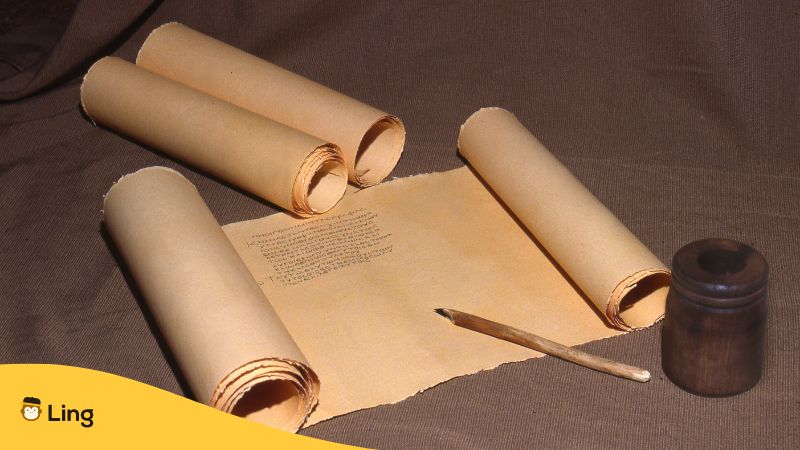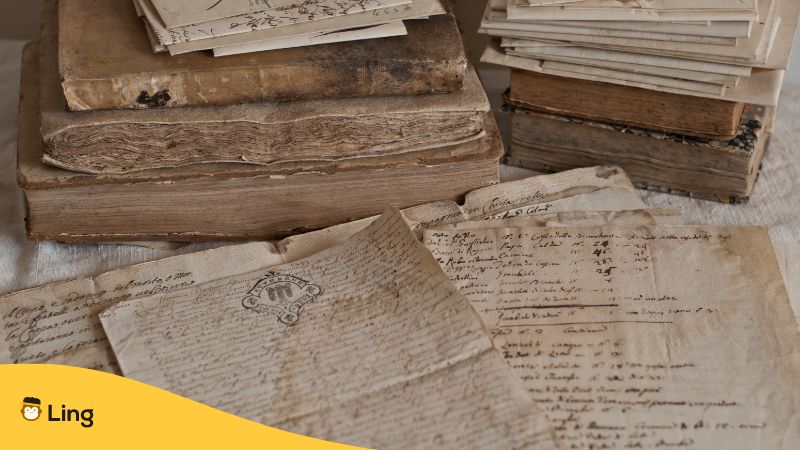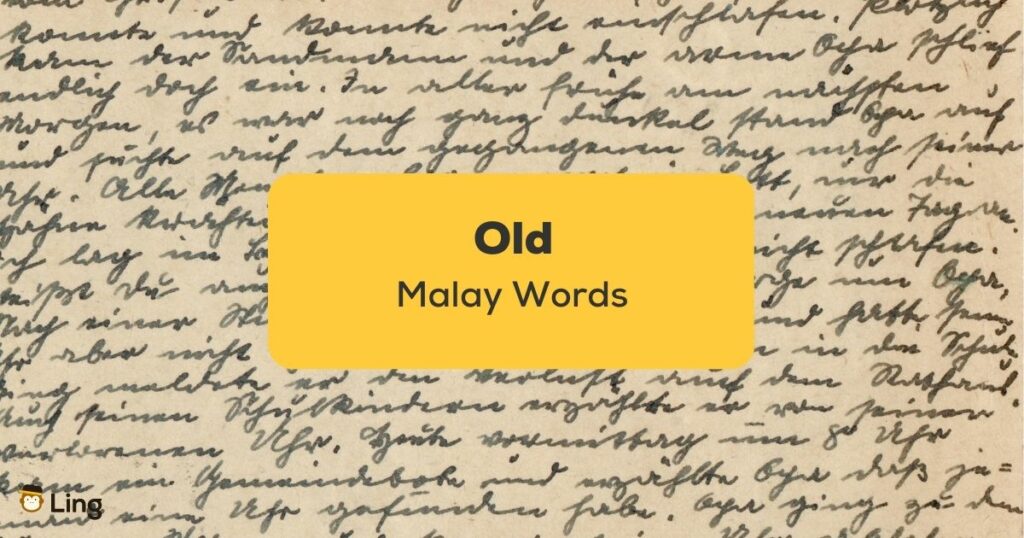Wondering about the significance of old Malay words? Malaysia is a multilingual country with a diverse cultural heritage. According to history, one of the languages that played a crucial role in shaping the country’s linguistic landscape is the Old Malay language. This ancient language has a rich history that spans centuries, and its influence can still be felt in modern-day Malaysia. Let’s get to know more about this in today’s post!
Old Malay, also known as Classical Malay, is an ancient language that is part of the Austronesian language family. It originated in the Indo-Australian Archipelago, which includes present-day Malaysia, Indonesia, and the Philippines. According to researchers, this was the region’s lingua franca back in the olden days and was widely used for trade, diplomacy, and communication among the various peoples of the Malay Archipelago. It was also used for religious and literary purposes, as evidenced by the numerous manuscripts and epics written in Old Malay.
The language evolved, adapting to the linguistic needs of the people who spoke it. Old Malay was heavily influenced by Sanskrit, which was the language of the Indian subcontinent, as well as by Arabic and Persian. As a result, Old Malay words have distinct influences from these languages.
Since Asia was one of the major trade routes then, Dutch travelers frequently visited this part of the world. Over time, the locals adopted Dutch words like the ones we have in the table below.
| English | Malay | Dutch |
| Book | Buku | Boek |
| Office | Kantor | Kantor |
| Room | Kamar | Kamer |
| Drawer | Laci | Laatje |
| Banner | Sepanduk | Spandoek |
Unique Old Malay Words
If you speak to people today, they may not recognize some of the words from the table below. However, we believe that it’s important that we continue to celebrate their existence.
| English | Old Malay | New Malay |
| Police Station | Rumah Pasung | Balai Polis |
| Library | Khutubkhanah | Perpustakan |
| Hospital | Rumah Sakit | Hospital |
| Radio | Tetuang udara | Radio |
| Mathematics | Ilmu Hisab | Matematik |
| Bamboo | Petung | Buluh |
| Gold | Kencana | Emas |
| Health | Afiat | Kesihatan |
| Sweets | Halwa | Manisan |
| Museum | Sekolah Gambar | Muzium |
| Tell | Bilang | Beritahu |
| Cloud | Mega | Awan |
| Wind | Pawana | Angin |
| Doctor | Tabib | Doktor |
| Geography | Ilmu Alam | Geografi |

Malay Words From Tamil
Malaysia has a diverse linguistic heritage, with words borrowed from various languages over the centuries. One language that has had a significant influence on Malay is Tamil, a Dravidian language spoken in India and Sri Lanka. Tamil has contributed many words to the Malay language, and these words are still used today. Check out the table below to see the best old Malay words from Tamil.
| English | Malay | Tamil Script | Pronunciation | |
| Mold | Acauan | அச்சு | Accu | |
| Gathering | Ambalan | அம்பலம் | Ampalam | |
| Gunpowder | Bedil | வீட்டில் | Vetil | |
| To paint | Cat | காட்டி | Cati | |
| Cigar | Cerut | சுருட்டு | Curuttu | |
| Couple | Jodoh | கோடு | Cotu | |
| Temple | Kuil | கோயில் | Koyil | |
| Throne | Mahkota | மகுடம் | Makutam | |
| Mango | Mangga | மாங்காய் | Mankay | |
| Mother | Uai | சுவை | Auvai | |
| Relative | Teman | தாமான் | Taman | |
| Water tap | Pili | பிலி | Pili | |
| Shield | Perisai | பரிசை | Paricai | |
| Screen | Tirai | திரை | Tirai | |
| Horse | Kuda | குதிரை | Kutirai |

Malay Words From English
If you check out the etymology of some English words, you may be surprised to find some of them are from a Malay word! To me, yes – Malay is influenced by Sanskrit, Tamil origin, and Persian, but we never thought it might be the other way around! Let’s take a look at some of these words below!
| English | Malay |
| Tea | Teh |
| Launch | Lancharan |
| Rattan | Rotan |
| Compund | Kampong |
| Cootie | Kutu |
| Paddy | Padi |
| Amok | Amok |
| Caddy | Kati |
| Gong | Gong |
| Cockatoo | Kakatua |
The influence of Old Malay on modern Malaysia is significant, as it has contributed to the development of the Malay language. Additionally, the old Malay language has also influenced the development of other languages in the region, such as Indonesian. Want to learn more about it? Then you’ve got to try out Ling!
Why Learn Malay?
Learning Malay offers numerous benefits, both personally and professionally. As the national language of Malaysia, Malay is widely spoken throughout the country, making it essential for those looking to travel or work in Malaysia. Malay is also spoken in Indonesia, Singapore, and Brunei, which opens up opportunities for communication and cultural exchange in these countries as well. But wait, how exactly are you going to learn this Asian language, right? Well, worry no more because we have here some of the best tricks.
- Immersion: Immersing yourself in a language is one of the best ways to learn quickly. This involves surrounding yourself with Malay speakers and using the language as much as possible. This can be achieved by living in Malaysia or by joining Malay-speaking communities in your area.
- Language classes: Taking Malay language classes from universities and language schools is another effective way to learn the language quickly. Language schools and universities offer Malay courses that are tailored to different levels of proficiency.
- Online resources: There are many online resources available for learning Malay, such as Ling and Duolingo. These resources offer a range of lessons and exercises that are designed to help learners improve their Malay skills quickly.
- Practice, practice, practice: Make an effort to speak Malay as much as possible, and listen to Malay music, watch Malay movies, and read Malay books and articles to immerse yourself in the language.
Learn Malay With Ling App

Learning a new language is a rewarding experience that opens up new opportunities and expands your cultural horizons. For those interested in learning Malay, Ling is an excellent resource to get started. With this platform, you can learn Malay and 60+ languages online from the comfort of your own home at your own pace. Talk about flexibility!
Ling also offers a range of courses and lessons tailored to your individual needs, whether you’re a beginner or an advanced learner. With its user-friendly interface and engaging content, this language-learning app makes learning Malay fun and interactive. Start your journey to mastering Malay today with Ling.
Ready to give it a try? Download the app from the Apple Store or Google Play Store today!





























































